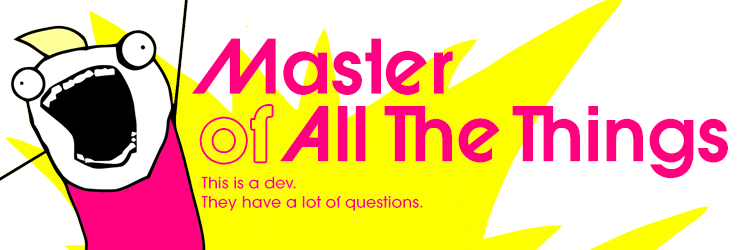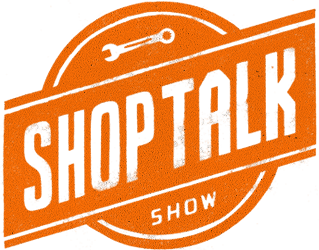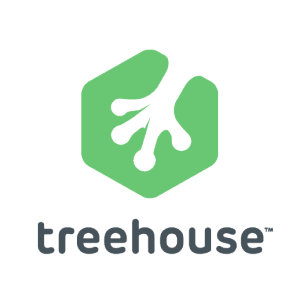
The quest for knowledge is never-ending. We all want to be masters in our respective fields, but we also know that there is, especially in the tech universe, an ever-expanding number of things to bone up on. So, how do we get there? How do we learn every single thing we need to know? Let’s find out!
Step One: Start nowhere
We can’t begin at the ending. That’s just a given. It’s hard to start, though, especially in an area where you want to excel. We want to be the best and to be able to showcase our talents and wares to the world if only for the fact that we don’t know a single thing about our new endeavor. Sometimes it’s a bit disheartening to start fresh with something; maybe something that you thought would be an easy pick-up is much harder than you expected and it’s a bit of a blow to your ego.
Let yourself get beaten up by your knowledge (or lack thereof). It’s not a bad thing! In fact, it may be better this way. If you start a new adventure of discovery fully aware that you know literally nothing about the subject into which you’re diving it’s fine to let your ego be squashed a little. It’s harder when you think you already know about a topic, sit down to learn more or bone-up on your old skills only to realize you’re suddenly in way over your head. Now you’ve lost something that you once had, and that can be a bit disappointing.
The main thing to consider as you begin a new quest for knowledge is that you’re learning. You’re taking the active steps needed to learn a new thing, whatever it is. Of course you’re not going to know everything right away. Of course there are going to be curveballs and surprises and speed bumps. Of course you’re gonna throw your hands into the air, sit back, and ask, “WHY AM I DOING THIS TO MYSELF?!”. Never fear, though–there are still good times ahead.
Step Two: Start somewhere else
 Okay, so that first step wasn’t actually a step but more of a lesson. This step is where the starting really starts. There are countless numbers of resources out there from which to learn and it’s really up to your own discretion and taste as to how you choose to learn. I know people who listen to podcasts throughout the day, like Chris Coyier and Dave Rupert’s Shop Talk. Personally, I can’t do this. at. all. I can’t focus on something like a podcast, or any other learning experience, while working. I need to be able to “get in the zone” and typically tune out everything around me. I have music on throughout the day, but that’s easy to tune out because it’s not something I need to really pay attention to — it’s basically just background noise to drown out the vast emptiness of the universe.
Okay, so that first step wasn’t actually a step but more of a lesson. This step is where the starting really starts. There are countless numbers of resources out there from which to learn and it’s really up to your own discretion and taste as to how you choose to learn. I know people who listen to podcasts throughout the day, like Chris Coyier and Dave Rupert’s Shop Talk. Personally, I can’t do this. at. all. I can’t focus on something like a podcast, or any other learning experience, while working. I need to be able to “get in the zone” and typically tune out everything around me. I have music on throughout the day, but that’s easy to tune out because it’s not something I need to really pay attention to — it’s basically just background noise to drown out the vast emptiness of the universe.
Outside of my working hours at this WordPress agency, though, I’m definitely up for podcasts. I’ve just started to get into them recently as I try to separate work-life from life-life and want to give my brain much-needed hours to relax and think about other things, but there are invaluable resources to be snatched up out there and we’d be foolish not to take them.
 In the same vein, there are several e-learning resources out there where you can watch tutorials and put those smarts to use in a sandbox environment. Here at WDS, we were #blessed to get a handful of accounts setup over at Treehouse for extended learning purposes. The topics covered at Treehouse are expansive and ever-growing, not to mention their inclusion of conferences and in-house programming. Whether you’re a novice or an expert, you can always find something to tickle your fancy over at Treehouse.
In the same vein, there are several e-learning resources out there where you can watch tutorials and put those smarts to use in a sandbox environment. Here at WDS, we were #blessed to get a handful of accounts setup over at Treehouse for extended learning purposes. The topics covered at Treehouse are expansive and ever-growing, not to mention their inclusion of conferences and in-house programming. Whether you’re a novice or an expert, you can always find something to tickle your fancy over at Treehouse.
If you’re not into listening to other people talk about the cool things happening in the world in which we’ve immersed ourselves, then there are still some other options for you. We would be remiss if we were not to mention Google. I was a freelancer before beginning at WDS, and before that I was just doing web design as a hobby rather than a career. For someone in that position, Google can be one of your best friends. Hopefully there are some human ones sprinkled here and there, too, but that’s just a nice-to-have. You can find anything with Google, of course. You can almost guarantee that if you’ve got a question on how something works, ten other people have already posed that question to a group of like-minded individuals somewhere on the web. Google doesn’t discriminate or judge based on your questions or how much experience you may or may not have – you just dump your insane questions into The Google Machine and out pump the answers. Which leads us to our next resource…
Stack Overflow. This is usually where I wind up after I visit my Google friend mentioned above. Stack Overflow is such an insane resource that I almost can’t believe it’s an actual thing. It just makes sense! First, you get to post your question and have random strangers hit you up with responses which would be awesome enough in and of itself. This is the basic message board structure, right? You post a thing, then a handful of people post responses. What’s extra nice about Stack Overflow, though, is that other uses can vote whether or not a response is useful or not useful. That means, when researching a problem, you can get a very quick glimpse of whether or not a solution worked for others. This is supremely useful. In a normal message board experience, you may just have to rely on the latest response or the one that “looks” the best. With Stack Overflow, you can get actual feedback on each individual response without having to try every single potential solution. To note, there’s also a very cool WordPress Development Stack Exchange which, as the name would suggest, is specific to WordPress development. HOW QUAINT.
The final resource I’d like to mention here is one that may not apply to your particular situation. No matter how you’re working on the web, one of the above four solutions could 100% work for you. If you have this resource at your fingertips, don’t discount it; your teammates/co-workers could be the greatest resource that you may not have yet discovered. When first beginning work at a new job, I think it’s natural to feel unsure of yourself and that, perhaps, asking too many questions is going to expose you as a fraud. Why are you asking so many questions?! Weren’t you hired because you KNEW this stuff?? Well, I can assure you that as long your questions progress, show growth, and indicate that you are not only learning as you go but attempting to step out of your comfort zone then nobody is going to think you’re a fraud.
As a Design Lead, I have several folks who come to me with questions on a daily basis and I love being able to field those questions, to help squash bugs, and to lend a fresh pair of eyes when needed. Even before we split into teams here at WDS, though, our fellow co-workers were easily the greatest resource around. Everybody comes from such unique backgrounds; I would wager that you won’t find any two people at WDS, or probably any company in the same industry, who have an identical or even strikingly similar history. Me? I was a pro-wrestling referee turned college student turned print designer turned web designer. Along that entire time, I was always doing web design as a hobby or a side-job and my experiences in doing so are going to allow me to see problems in a different light than someone else on my team. So, don’t be afraid to ask questions early and often.
Step Three: Put it into action
This step usually works hand-in-hand with step two. Very rarely do you know all of the questions up-front, ask them, remember all of the answers, then dive into your project without having to go back and review those answers. Working through a project and asking questions are symbiotic with one another from the start of a project to that project’s end.
That’s not to say that there still aren’t resources out there for you to utilize when you’re feeling a bit stuck, or when something just doesn’t seem to be working properly within your theme. Maybe you’re working on a new feature or some fancy-pants styles and they just aren’t gelling, for some reason, with your theme. It could be something you’ve done dozens of times before, but suddenly now it’s just not falling into place. Before you go absolutely insane, take a step back and try to isolate the issue.
Maybe the best thing for you to do is to try your code outside of your project, whether it’s a theme, plugin, or something else all together. If you’ve got some code that you think should be working but, for some reason, isn’t then head over to CodePen where you can freely test your functionality outside of the scope of your project. CodePen is an awesome resource because it lets you widen that laser-focus with which you’ve been working thus far. I know we can all get a bit of tunnel vision while working on a project or task. We get so ingrained in what we’re doing that it’s hard for us to truly take a step back, look at things objectively, and assess what is the root of the problem. By setting up a workspace on CodePen, you eliminate all of the extra baggage of your project and can very easily focus on the one piece causing you grief.

What if your problem is more design-related, though? CodePen can still be a good resource, but there’s an even better one for those of us tasked with making things oh-so-beautiful every day. SassMeister is a way to stretch your Sassy legs all the live long day. Here, you can dump some Sass into one panel, see the compiled CSS in another, add your HTML in a third panel, and finally see your results in the fourth. How cool is that? Now, if you have some nutty experimental Sass that you want to test out small-scale, or if you have some Sass that seems to be colliding, you can break those examples out and fine-tune them without interference from the rest of your style magic.
Step Four: Admit when you’re in over your head
We’ve all been here before. There’s no shame in not knowing. We all used to know nothing, right? We were just soft little jelly babies rolling around and drooling all over everything. We didn’t know how to make websites! Somehow, though, we learned. We were carved from chubby little balls of play-doh into larger balls of play-doh who had better brains in their think buckets. It was hard but we did it, and we probably didn’t even really think about it. Going from a baby to where we are now is a long journey, so it’s a little harder to locate the pain points. Those pain points stick much harder when you’re in the weeds and trying to trudge through.

When working in a project there will always be hurdles. Heck, when working through a task there will typically be hurdles. Most of them you can jump yourself, but sometimes you just smash your shins into the hurdle and feel yourself falling face-first toward the ground. Nobody wants to fall face-first toward the ground. It’s gonna hurt. How do you avoid that seemingly inevitable face-plant? Call out for help, and call out for that help early! You don’t want to call for help after you’ve already smashed your gorgeous face up on the ground; you want to ask for help before you even get close to that point. So, the second you start to feel yourself falling is the second you should start thinking about getting some help.
Whether this comes in the form of Google, Stack Overflow, or teammates (as mentioned in step 3), make a point to look for help. I typically find that bouncing ideas off of my teammates is the best way to troubleshoot because I’m getting help from someone with a similar workflow and the same investment in the project as myself. That being said, if you don’t work in a team environment there are still a multitude of resources to lend you a hand.
One thing to remember is to not be afraid to break things in your local development process. This is the place to break them! If you try something new and white-screen your site, then you know that you need to do some more research. That’s when you start down the path of broadening your horizons and learning things you never even knew you wanted to learn. This is stepping out of your comfort zone, and it’s an essential building block to growth. To paraphrase something I said in a conversation the other day, “If I didn’t know the things I learned by breaking things or doing something wrong, I wouldn’t know about 80% of what I know.”
Just as there is no shame in not knowing, there’s no shame in breaking things or doing things wrong if you’re breaking things in a safe environment and then taking the steps to figure out why you broke it, why it was unsafe, and how you can do it the right way from this point forward. Learn by doing and by doing things that are just enough out of your reach to test yourself.
Step Five: Find your allies
Admitting you don’t have all of the answers is a big step, but you also need to know who you can count on for help. We’ve been through those steps above, but it’s important to marinate on this one a bit more.
Ask for advice. Even if you know how to do a thing, ask around for new or possibly better ways to do that thing. We can tend to get stuck in our old ways and do things out of habit. Here at WDS, we’re very intent on killing the hamburger nav icon and carousels. Why? Because they stink! Studies have shown that the hamburger icon itself lowers user retention on a site because not only are there people who still don’t know what that means, but also because you’re locking additional content behind another door. A user has to click on that button to earn access to more content, and it’s easy to breeze right by it. And carousels, well they just stink. They’re the worst. They’re past their prime.
We don’t always get to make those calls, though. A lot of the time you’ll have clients who want those specific elements, or even more out-of-fashion elements, in their site and there’s no talking them out of it. The client has gotten used to the way the web looks and doesn’t want to deviate from what they’re comfortable with. We can be the exact same way as designers, but the way we grow out of that is to educate ourselves on the newest, latest, and greatest advancements in the web and in design. In turn, it’s our job to educate our clients to those same advancements so we can work side by side with them.

An essential point to learning is to keep an open mind. You can’t be afraid to try something new even if it seems crazy or weird to you at first glance. There have been several times while working at WDS that we talked back and forth about workflow and what would be best for our team. Most of the time we don’t have everybody 100% on board with the same idea. There have been times that I, as a Design Lead, haven’t been fully on board with the idea of a new piece of workflow until I actually started using it. The idea sounded crazy, but the actual implementation turned out to be perfect and has become an integral part of my day.
It may seem important to work with people who think just like you, but it’s equally as important to work with people who don’t think just like you. These are the people are going to be ones to help build you up while you build them up as well. The cross-pollination of ideas and workflows is going to be what drives you, and your team, forward in the future–if you’re willing to step a bit out of your comfort zone.
I have to admit, the title of this article was very intimidating. And starting nowhere was the perfect lead – because that’s exactly where I was – nowhere. But as the article unfolded, it made more and more sense. I’ve printed this out and plan to sit quietly in the backyard, drink in hand, and reread it until some of this actually sinks in. Thanks for the article – I’m enjoying it.
I’m glad the tongue-in-cheek title didn’t send you running. Thanks for reading & the kind words!
This does not help me to know everything. This should be retitled: “How to know as much as you can and how to cope with the fact that you know little”
“The only true wisdom is in knowing you know nothing.”
― Socrates